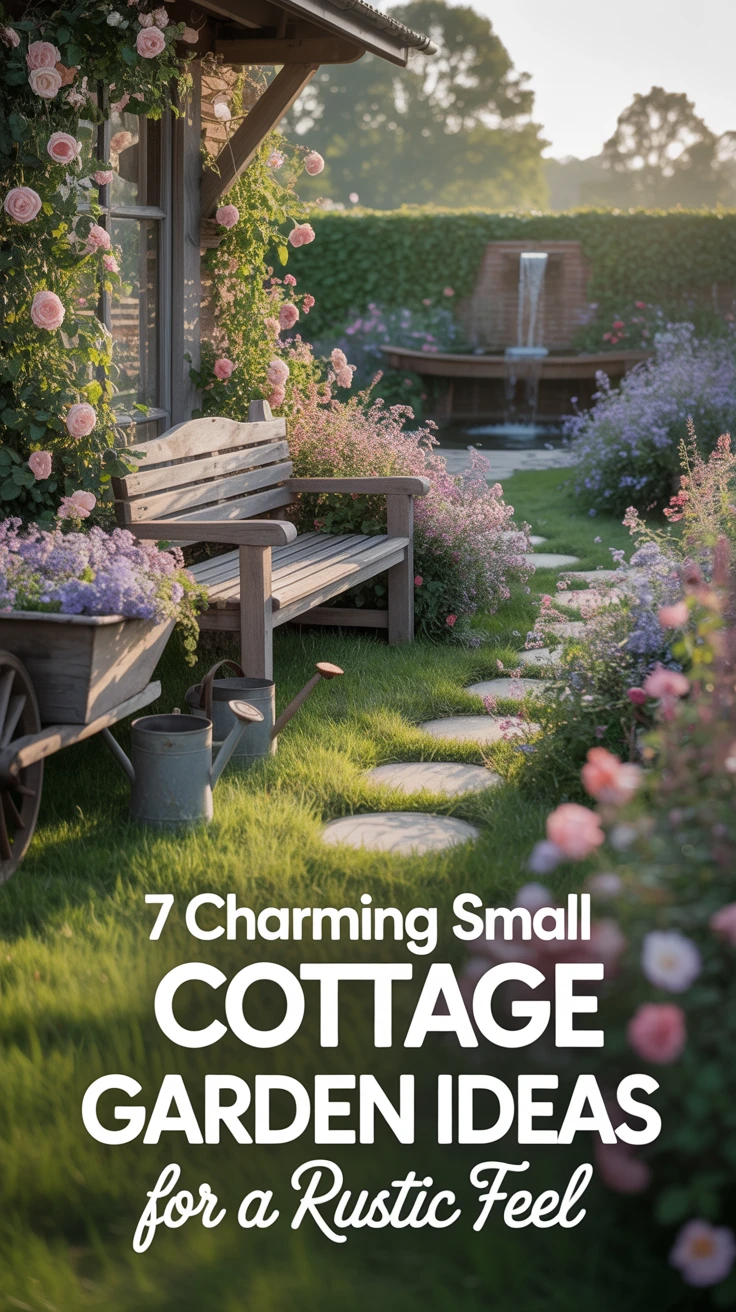
Introduction to Small Cottage Gardens
There’s something undeniably charming about a cottage garden that transports you to a simpler time. As someone who’s transformed even the tiniest of spaces into lush, romantic gardens, I can tell you that creating a small cottage garden is both achievable and rewarding. The beauty of cottage gardens lies in their seemingly unplanned abundance—a delightful chaos of colors, textures, and scents that somehow work in perfect harmony.
When I first moved into my home with its postage-stamp sized yard, I wondered if I could ever create the rustic garden of my dreams. Through years of trial and error, I’ve discovered that limited space can actually enhance the cozy, intimate feel that makes small cottage gardens so special. In this article, I’ll share seven ideas that have helped me and countless clients transform modest outdoor areas into enchanting cottage retreats.
1. Wildflower Wonders: A Cottage Staple
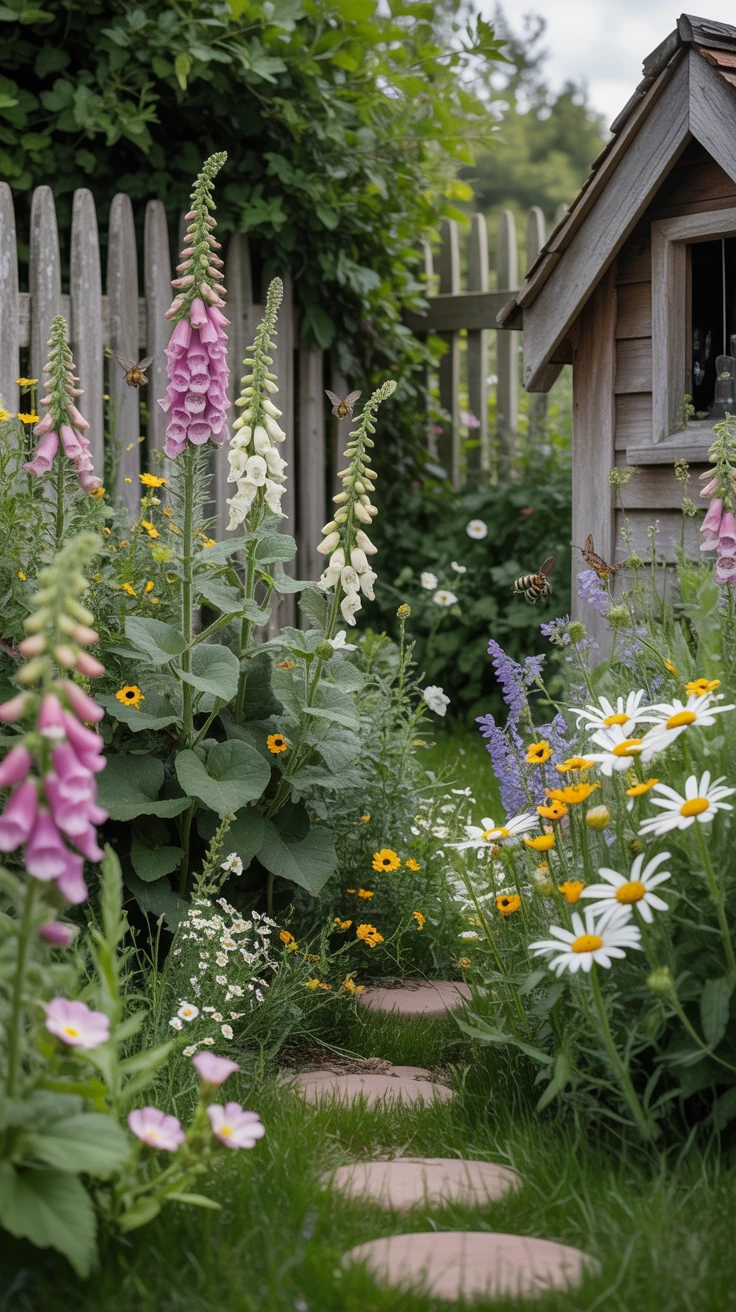
The heart and soul of any small cottage garden is an abundance of flowers—particularly wildflowers that create that carefree, natural aesthetic. In my earliest garden attempts, I made the mistake of being too structured. Once I embraced the beautiful disorder of wildflowers, my garden truly came to life.
Wildflowers bring several benefits to your small space:
- They attract essential pollinators like bees and butterflies
- They require minimal maintenance once established
- They create that authentic cottage feel with their informal growth patterns
- They often self-seed, providing free plants for years to come
I’ve found that mixing classic cottage flowers like foxgloves, hollyhocks, and daisies creates a timeless look. For my own garden, I focus on creating a succession of blooms by combining early flowering varieties like columbines with mid-summer bloomers such as coneflowers and late-season stars like asters.

View on AmazonAs an Amazon Associate, I earn from qualifying purchases.

View on AmazonAs an Amazon Associate, I earn from qualifying purchases.
Pro Tip: Combine both annuals and perennials in your wildflower selection. Annuals like cosmos and poppies provide immediate impact while perennials establish themselves, giving you continuous color throughout the growing season.
2. Timeless Elegance with Vintage Decor
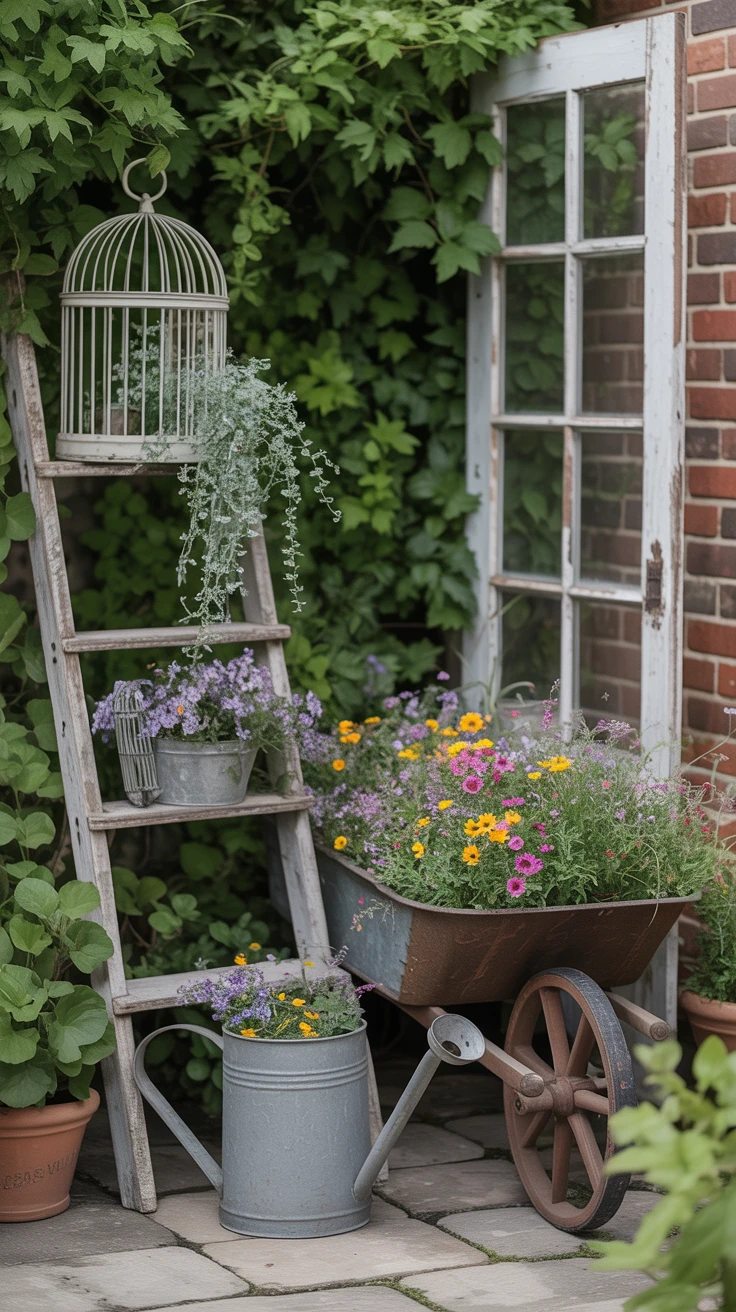
Nothing says “cottage garden” quite like thoughtfully placed vintage elements. These weathered treasures tell a story and add instant character to even the newest garden. I still remember finding my first rusted watering can at a local flea market—it now serves as a planter for trailing lobelia and has become the focal point of my herb corner.
Consider incorporating these vintage elements:
- Weathered wooden ladders as plant stands or trellis alternatives
- Antique wheelbarrows repurposed as dramatic planters
- Old metal watering cans strategically placed among plantings
- Vintage bird cages housing trailing plants or serving as decorative elements
- Salvaged windows or doors creating garden “walls” or backdrops
I’ve learned that restraint is key—too many decorative elements can make a small space feel cluttered rather than charming. Choose a few statement pieces that complement your plants rather than compete with them.
Pro Tip: When hunting for vintage garden decor, look beyond the obvious. I’ve found some of my best pieces by exploring estate sales, architectural salvage yards, and even asking older relatives if they have unused items gathering dust in their sheds.
3. Cozy Corners: Seating for Serenity
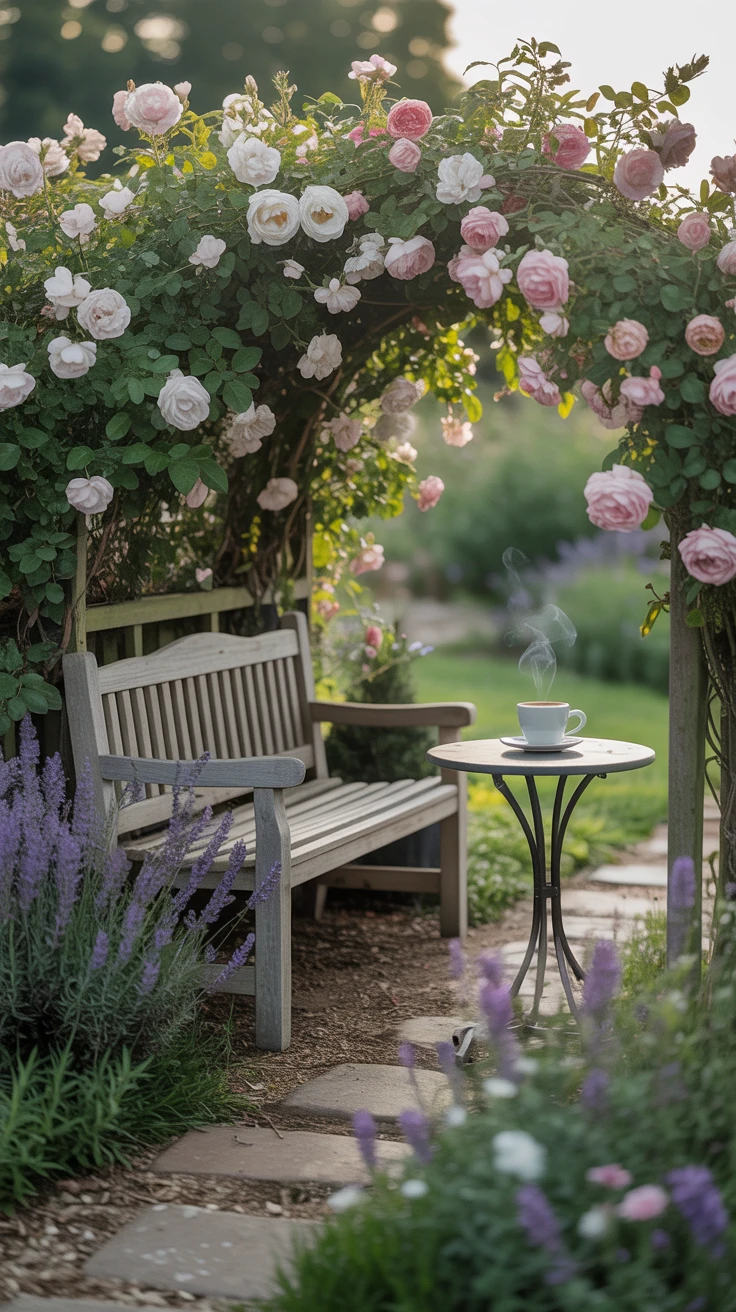
A true cottage garden isn’t just for looking at—it’s meant to be experienced. Creating a place to sit and enjoy your garden transforms it from a mere visual pleasure to an immersive retreat. In my own narrow side yard, I tucked a small wrought iron bench beneath an archway of climbing roses, creating what has become my favorite morning coffee spot.
Even the smallest gardens can accommodate a thoughtful seating area. A single chair nestled among fragrant herbs or a rustic bench beneath a flowering shrub creates an invitation to pause and appreciate your creation. I prefer weathered wooden benches or metal bistro sets that develop patina over time, enhancing that coveted cottage aesthetic.
The key is positioning your seating to provide the best vantage point of your garden while also considering practical matters like shade during hot afternoons. I made the mistake of placing my first bench in full sun—a lovely spot in spring but unbearable by July!

View on AmazonAs an Amazon Associate, I earn from qualifying purchases.

View on AmazonAs an Amazon Associate, I earn from qualifying purchases.
Pro Tip: Position seating near fragrant plants like lavender, roses, or sweet peas. The sensory experience of sitting surrounded by gentle scents elevates the entire garden experience and creates a truly immersive cottage garden feel.
4. Pathways that Meander
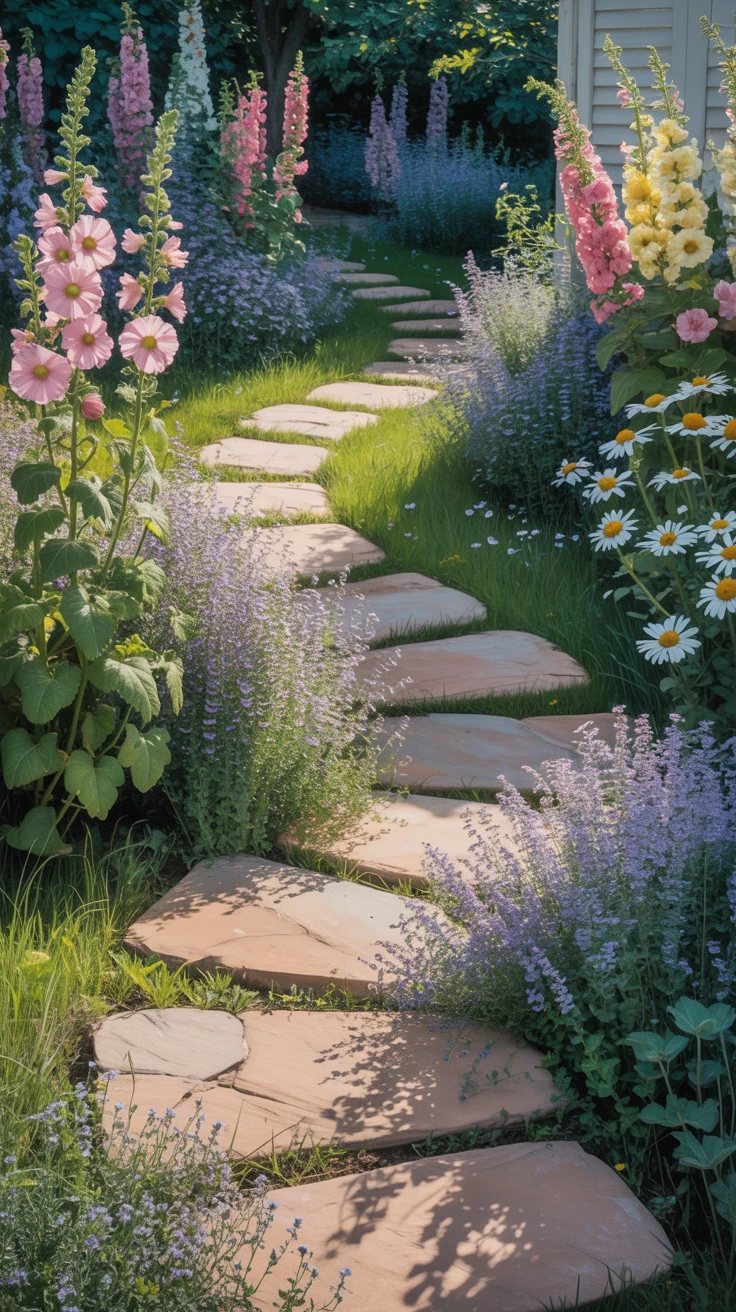
One of the most transformative elements I’ve added to small cottage gardens is winding pathways. A straight path gets you from point A to point B efficiently, but a meandering one invites exploration and makes your space feel larger than it actually is. When I replaced my straight concrete walkway with a curving path of stepping stones, my garden instantly felt more intriguing and spacious.
The materials you choose for your path contribute significantly to the cottage feel. I prefer natural materials that weather beautifully over time: irregular flagstones with thyme growing between them, crushed gravel that crunches pleasantly underfoot, or even simple mulch paths edged with collected stones.
The true magic happens when you allow plants to spill over onto the edges of your path. This softening effect blurs boundaries and creates that slightly untamed look that defines cottage gardens.
Pro Tip: Design your path to disappear around a corner or behind a larger plant. This simple trick creates mystery and makes visitors wonder what lies beyond, giving the illusion of a much larger garden space.
5. Go Vertical: Making the Most of Your Space
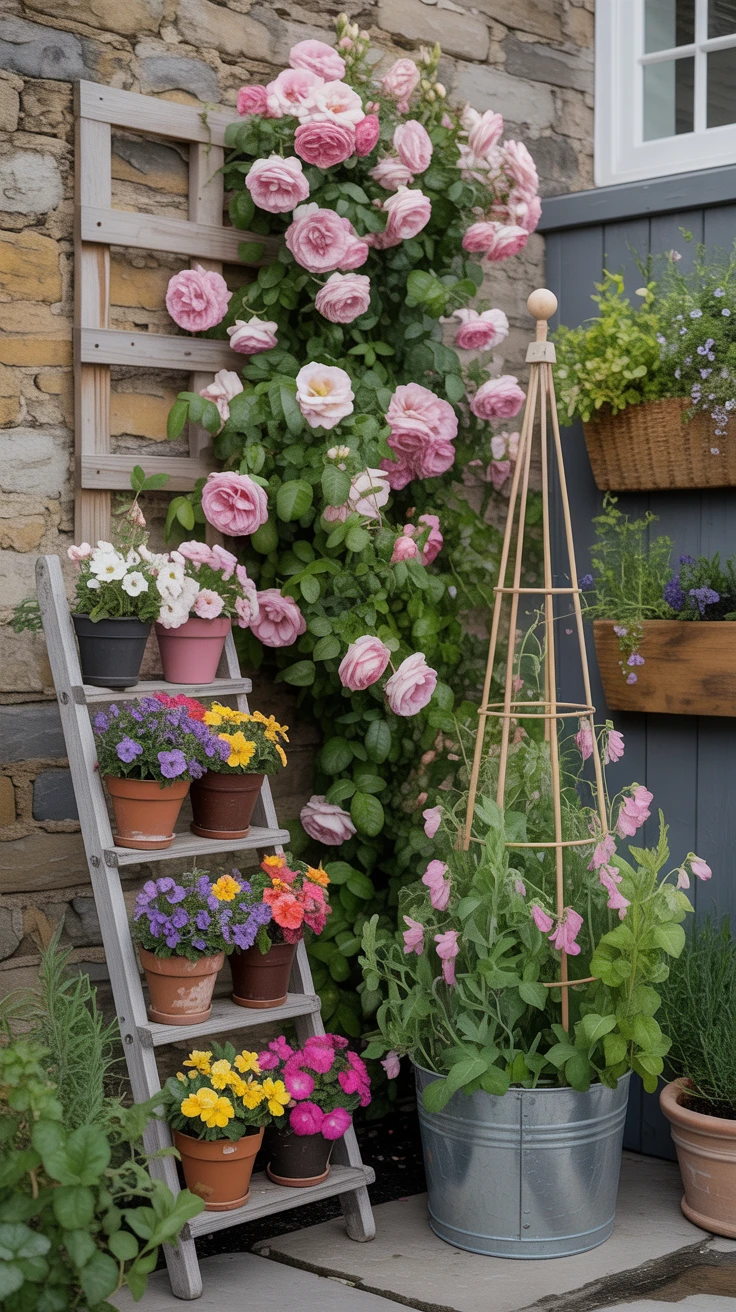
When working with limited square footage, the secret is thinking beyond the ground plane. I’ve doubled my planting space by embracing vertical gardening techniques that add height and drama to my small cottage garden.
Effective vertical elements include:
- Trellises for climbing roses, clematis, or sweet peas
- Obelisks placed strategically throughout beds for architectural interest
- Wall-mounted planters for trailing herbs or flowering annuals
- Repurposed ladders creating multiple planting tiers
- Espaliered fruit trees that provide both beauty and bounty in minimal space
My own garden transformation began when I installed a simple wooden trellis against a bare fence and planted a climbing ‘New Dawn’ rose. Within two seasons, that once-empty vertical space became a fragrant wall of soft pink blooms that now forms the backdrop for my entire garden.

View on AmazonAs an Amazon Associate, I earn from qualifying purchases.

View on AmazonAs an Amazon Associate, I earn from qualifying purchases.
Pro Tip: Layer your vertical elements by placing shorter climbing plants in front of taller ones. This creates depth and interest while maximizing your growing space. In my garden, I have clematis climbing through roses, creating a succession of blooms throughout the season.
6. The Tranquility of Water Features
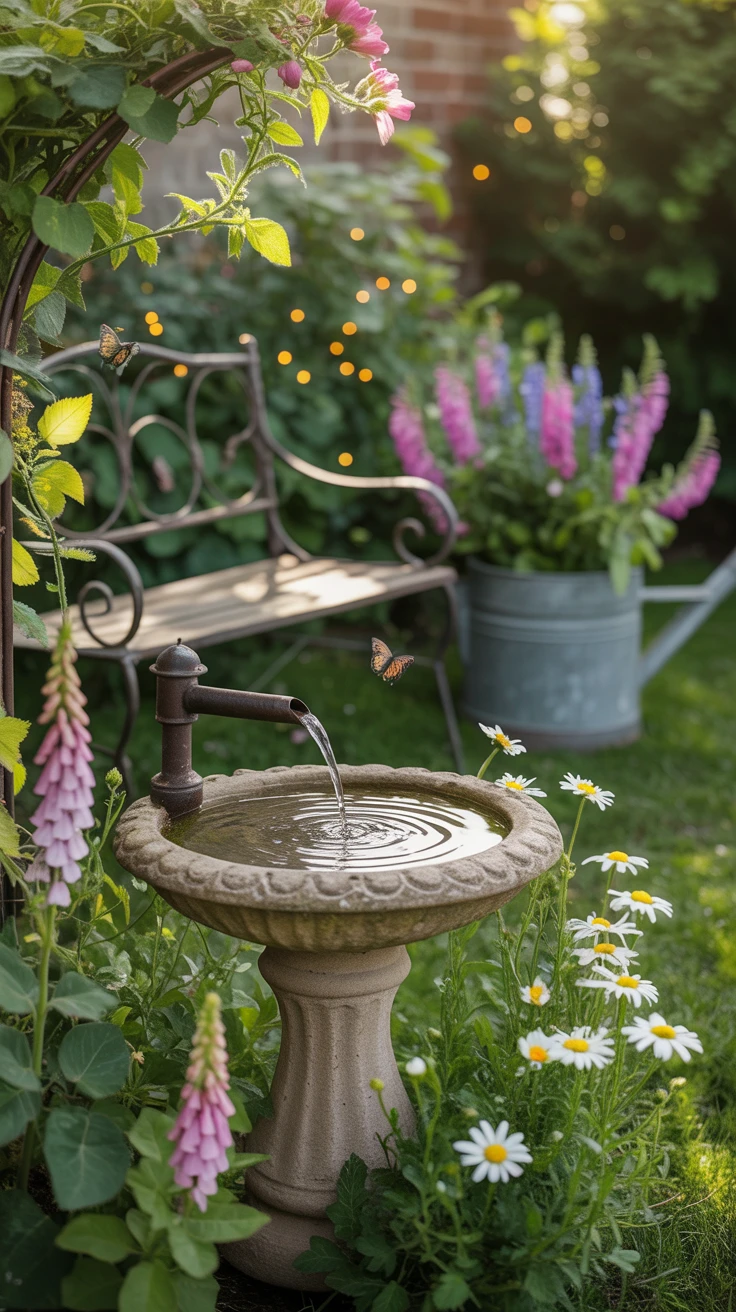
Water brings a special magic to gardens of any size. In my experience, even the smallest water feature adds a dimension of tranquility that transforms a garden from pretty to enchanting. When I added a simple ceramic bird bath to my tiny front garden, I was amazed at how it became not just a visual focal point but a hub of garden activity.
You don’t need elaborate ponds or fountains to incorporate water into your cottage garden. Consider scale-appropriate options like:
A vintage galvanized tub filled with water lilies, a small wall-mounted fountain that recirculates water with minimal electricity, or even a classic bird bath that attracts feathered visitors while adding charm.
The sound of trickling water creates an atmosphere of calm that enhances the cottage garden experience. I’ve found that positioning a small fountain near my seating area masks urban noise and creates a more immersive garden experience.
Pro Tip: Choose solar-powered water features to avoid complicated wiring and reduce energy consumption. Modern solar options are surprisingly effective and allow flexibility in placement since they don’t require proximity to an electrical outlet.
7. Embrace Plant Abundance
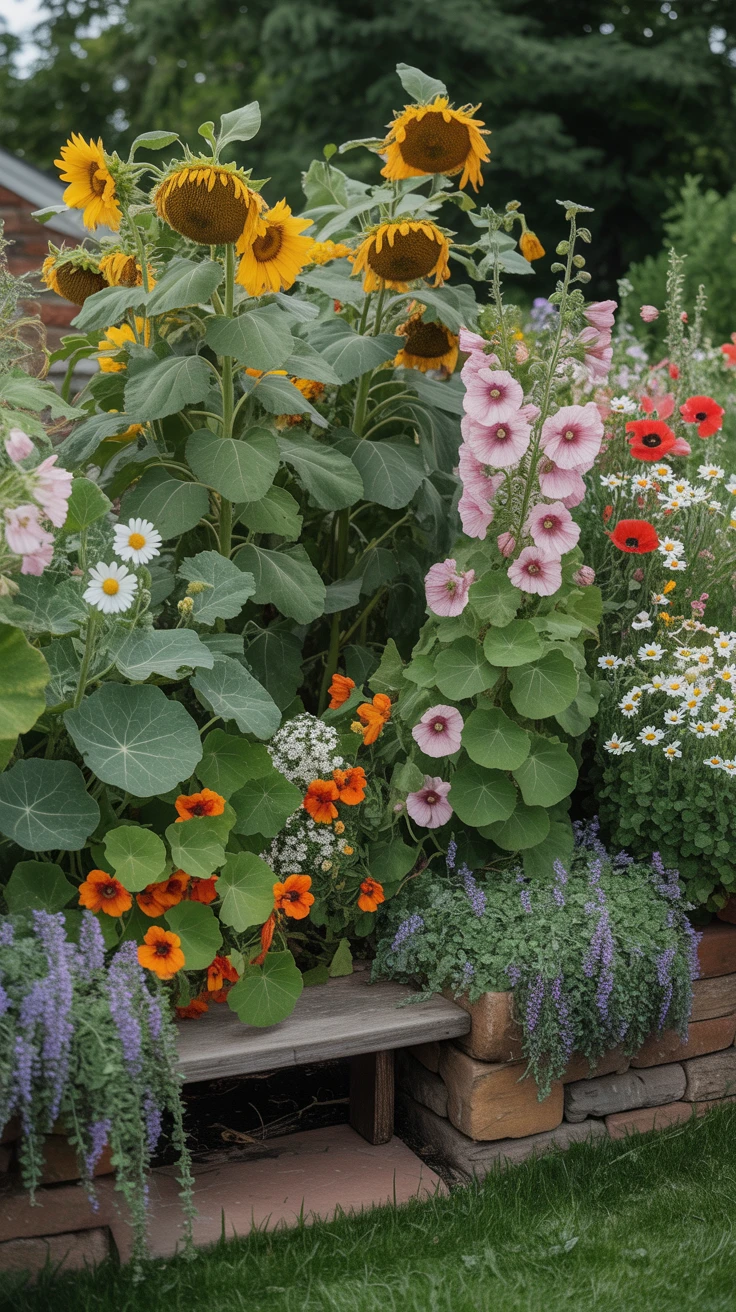
The defining characteristic of cottage gardens is their lush, abundant planting style. Unlike more formal garden designs with their careful spacing and manicured appearance, small cottage gardens thrive on a certain controlled chaos. I learned this lesson the hard way after initially planting my garden with too much restraint, leaving it looking sparse and uninspired.
Now I follow the cottage gardener’s mantra: “If you can see soil, you need more plants!” This doesn’t mean overcrowding, but rather thoughtful layering. I place taller plants at the back, mid-height bloomers in the middle, and ground-covering plants at the edges. This creates a tapestry effect where plants support each other both visually and physically.
Don’t be afraid to mix vegetables, herbs, and flowers together—this interplanting is a hallmark of traditional cottage gardens. My most successful bed combines ornamental kale, trailing nasturtiums, fragrant thyme, and climbing sweet peas in a delightful jumble that provides both beauty and bounty.

View on AmazonAs an Amazon Associate, I earn from qualifying purchases.

View on AmazonAs an Amazon Associate, I earn from qualifying purchases.
Pro Tip: When planning your abundant plantings, focus on selecting at least 30% evergreen or structural plants. These provide year-round interest and form the backbone of your garden when deciduous plants are dormant.
Conclusion
Creating a charming small cottage garden isn’t about having acres of land—it’s about thoughtful design choices that maximize beauty in limited space. By embracing wildflower abundance, incorporating vintage elements, creating cozy seating areas, adding meandering paths, going vertical, including water features, and planting generously, you can create a garden that feels both timeless and personal.
My own journey from blank slate to cottage garden oasis has taught me that patience is essential—these gardens evolve and improve with time. Start with good bones, add plants that bring you joy, and allow your garden to develop its own unique character. Before long, you’ll have created a rustic retreat that provides beauty, tranquility, and a deep connection to the natural world—regardless of its size.
